Review: 2025 Suzuki DR-Z4S
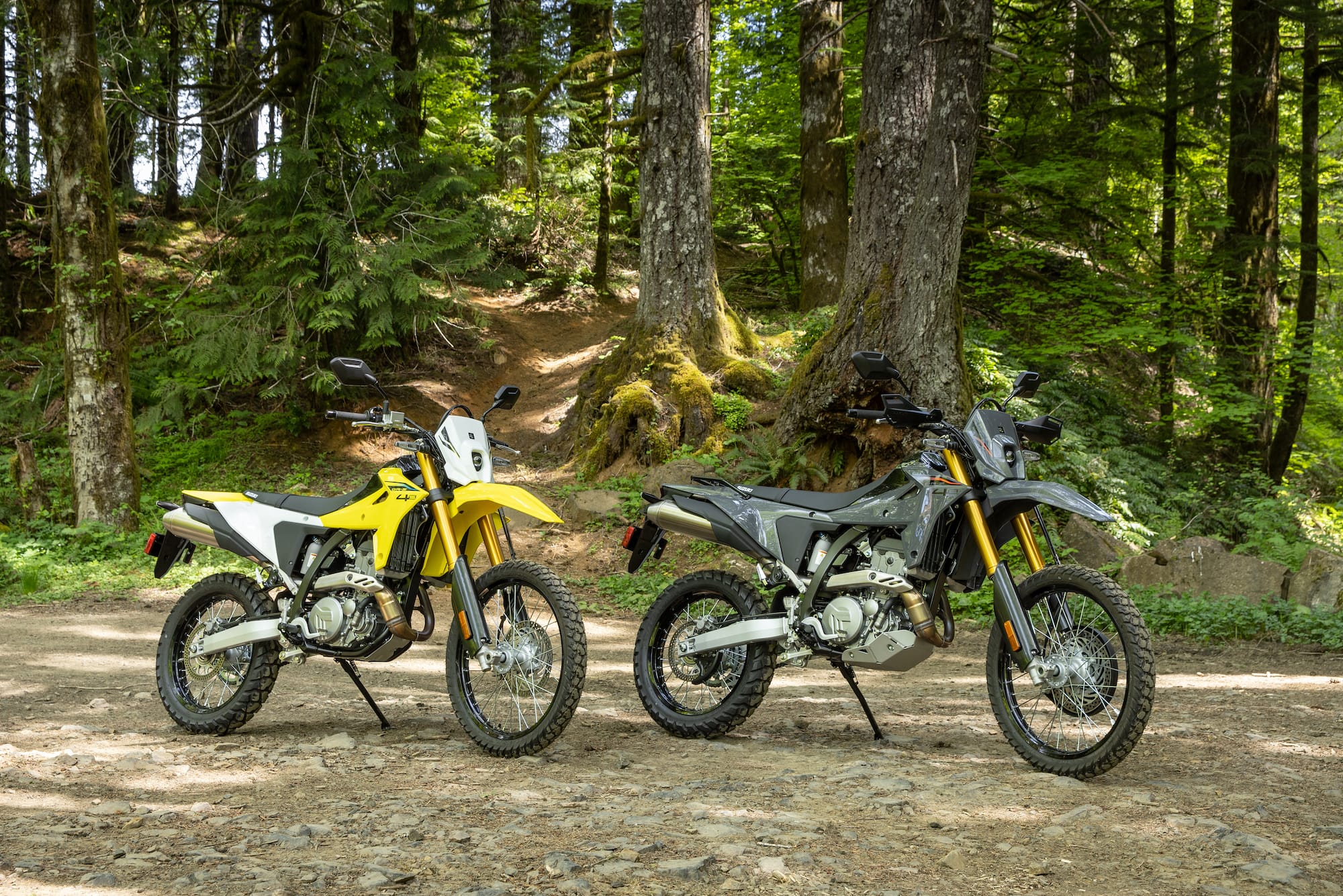
Modern Tech Meets Enduring Spirit
The Tillamook State Forest spans approximately 364,000 acres between Portland, OR, and the state’s northern coast. Suzuki chose this rugged expanse, boasting more than 250 miles of designated off-highway vehicle (OHV) trails, to introduce the 2025 DR-Z4S to the world press. The maze of interconnecting fire roads and single-track trails effectively highlighted the new bike’s off-road capabilities while minimizing pavement riding, which aligns with the bike’s design criteria.
While descending one of these loose-gravel single tracks, it became apparent to me that in the last eight years, I had only ridden in the dirt a handful of times. My pace was slow, forcing me to accept the reality of my tarnished skills. I also realized the new DR-Z’s greatest attribute, that being its ability to foster new to intermediate motorcyclists to explore the world of dual-purpose riding, while also providing enough performance to satisfy the expectations of a seasoned off-roader. Not to mention, it could teach this old dog some new tricks. Outfitted with an arsenal of rider aids, the DR-Z4S adjusts its performance to match the rider's skill set.
Having gone largely unchanged since its introduction 25 years ago as the DR-Z400S, the new DR-Z4S accomplishes this user-friendliness in a myriad ways. From styling to chassis, engine to electronics, the DR-Z is an all-new model that benefits from the latest technologies Suzuki could incorporate, while keeping the new bike’s retail price at a reasonable $8,999—an $1,800 increase over the 2024 model.
Electronics
The new DR-Z4S is equipped with Suzuki’s Intelligent Ride System (SIRS). This suite of electronic rider aids includes three power mode levels via the Suzuki Drive Mode Selector (SDMS), three levels of traction control, and defeatable ABS. All three ride modes (marked A, B, and C) provide full power from the engine; it’s the delivery of power where they differ. Mode A yields the most immediate and sharp response, while Mode B delivers a more linear power curve, and Mode C the softest engine power characteristics.
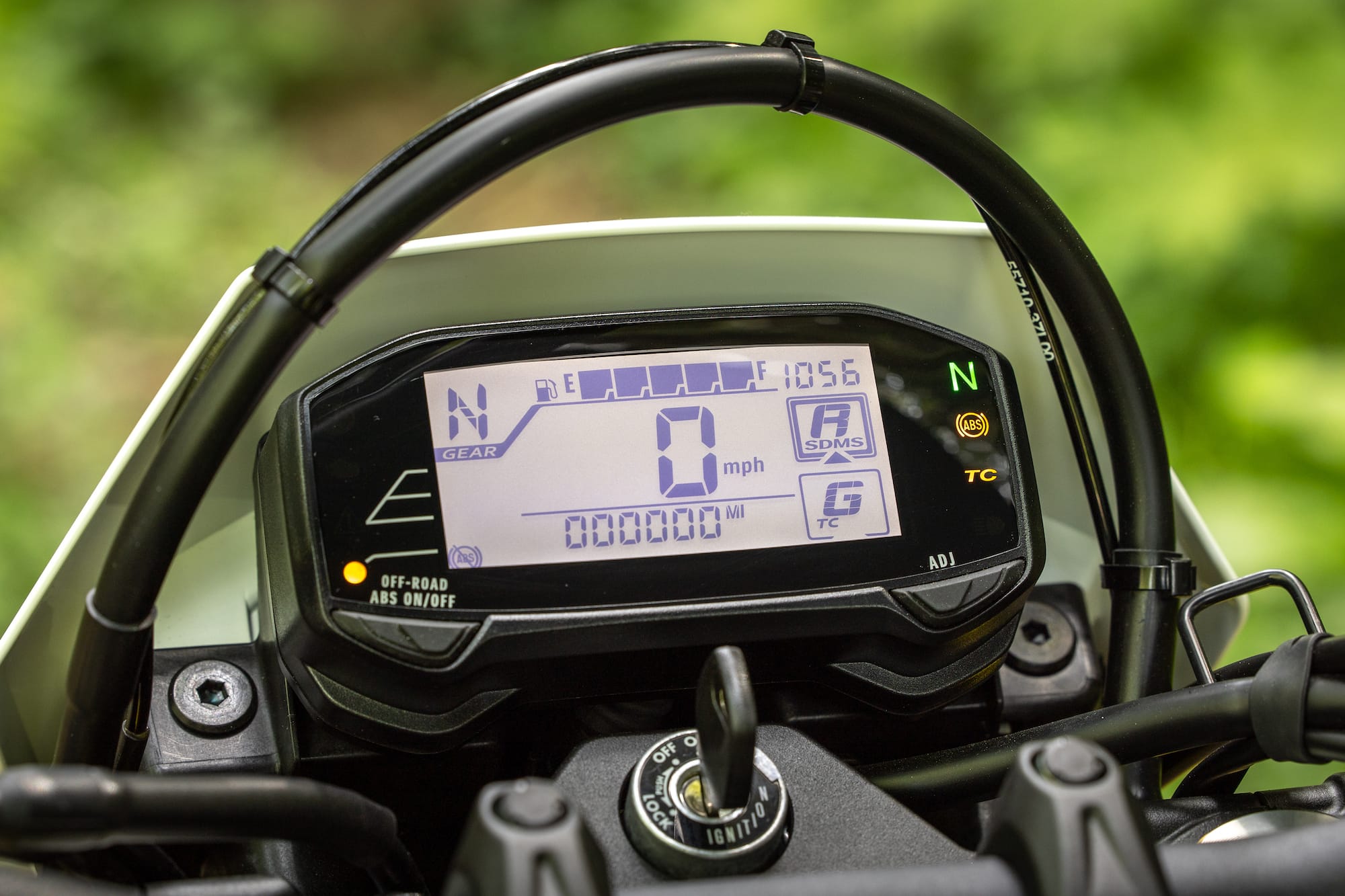
Traction control comes in four levels, from level 1 (least intrusive) to 2 (more intrusive) for street riding conditions, G (gravel) mode for off-road riding, or the system can be completely turned off. ABS can be switched off at the rear while still functioning on the front, or it can be turned off at both wheels. It’s on at both wheels by default, and it returns to this state any time you shut the engine with the key. To maintain your ABS selection when riding, use the killswitch rather than the key.
Throughout the two-day introduction, when riding in the dirt, I settled on using B ride mode and G TC mode, with ABS switched off at the rear wheel. The combination made power manipulation and rear tire spin easy to modulate, especially considering the mediocre off-road grip of the stock IRC GP-410AT tires. By retarding ignition and briefly adjusting the throttle, the G mode prevents excessive wheel spin without significant power loss, making the DR-Z4S more forgiving in demanding situations, such as climbing gullies with limited grip. It’s an excellent benefit for novice riders, while experienced riders who prefer unassisted control can easily deactivate traction control.
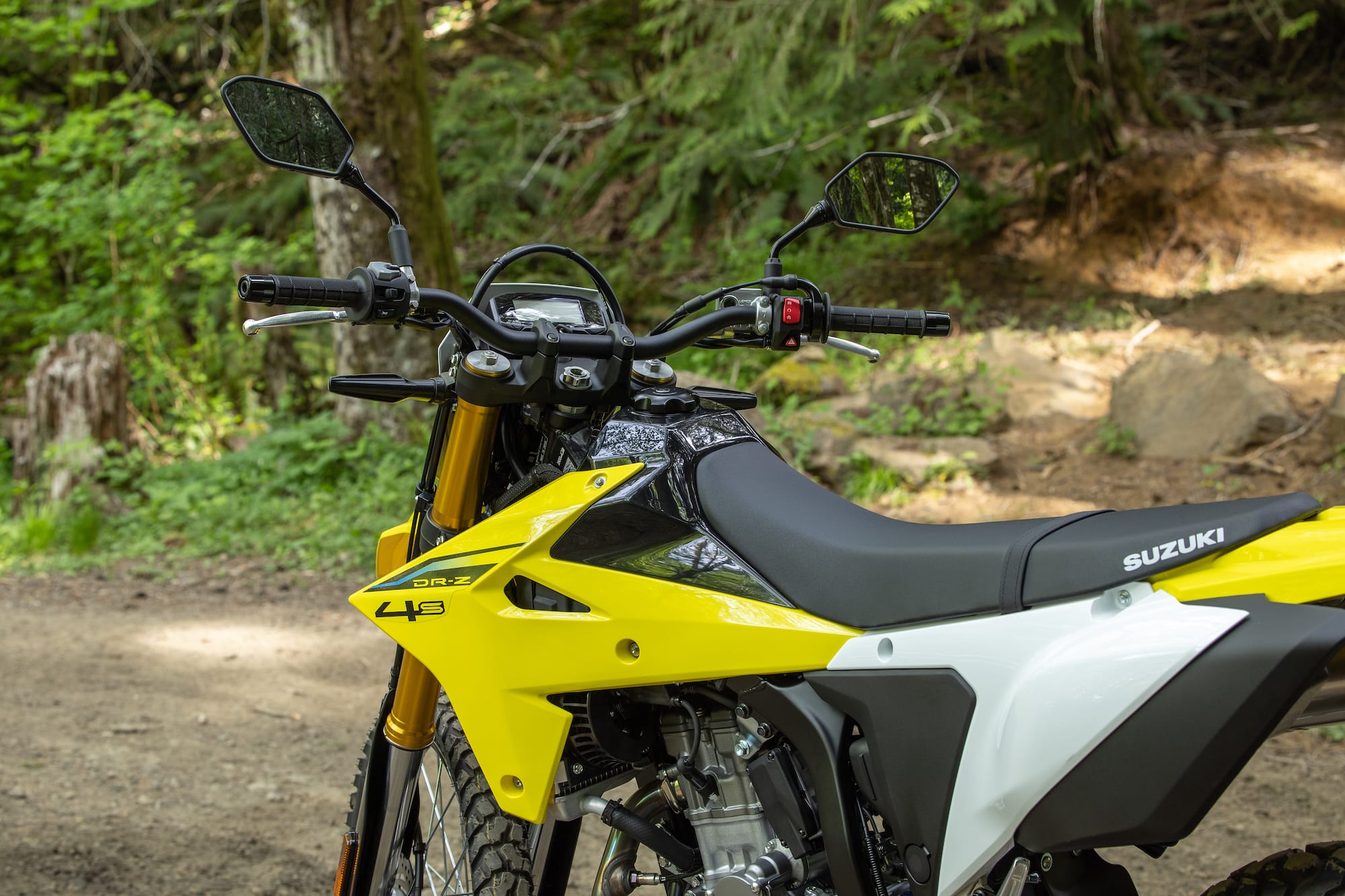
Switching back to A ride mode and TC 1 on the pavement, the DR-Z felt like a whole different beast. The ride-by-wire system provides a natural feeling at the twist grip, but the difference in engine response between B and A modes isn’t subtle. The new bike also incorporates Suzuki’s Easy Start System, where a single, momentary press of the starter button is all it takes to fire the engine.
The new LCD instrument cluster, although not a color TFT display, provides pertinent information in a defined layout that makes it easy to absorb at a glance. Readouts include a new fuel gauge and gear position indicator, as well as a speedo, odometer, twin trip meters, and ride and TC mode indicators.
Engine and Transmission
With a bore and stroke of 90mm x 62.6mm and a 398cc displacement, the new single-cylinder engine is dimensionally the same as the outgoing one, while also being significantly different. The compression ratio is slightly lower (11.1:1 vs. 11.3:1). More importantly, however, fuel injection replaced carburetion, a second spark plug was added, the skirt of the forged piston was optimized, and the intake valves are now made of titanium, while the exhaust valves are hollow and sodium-filled.
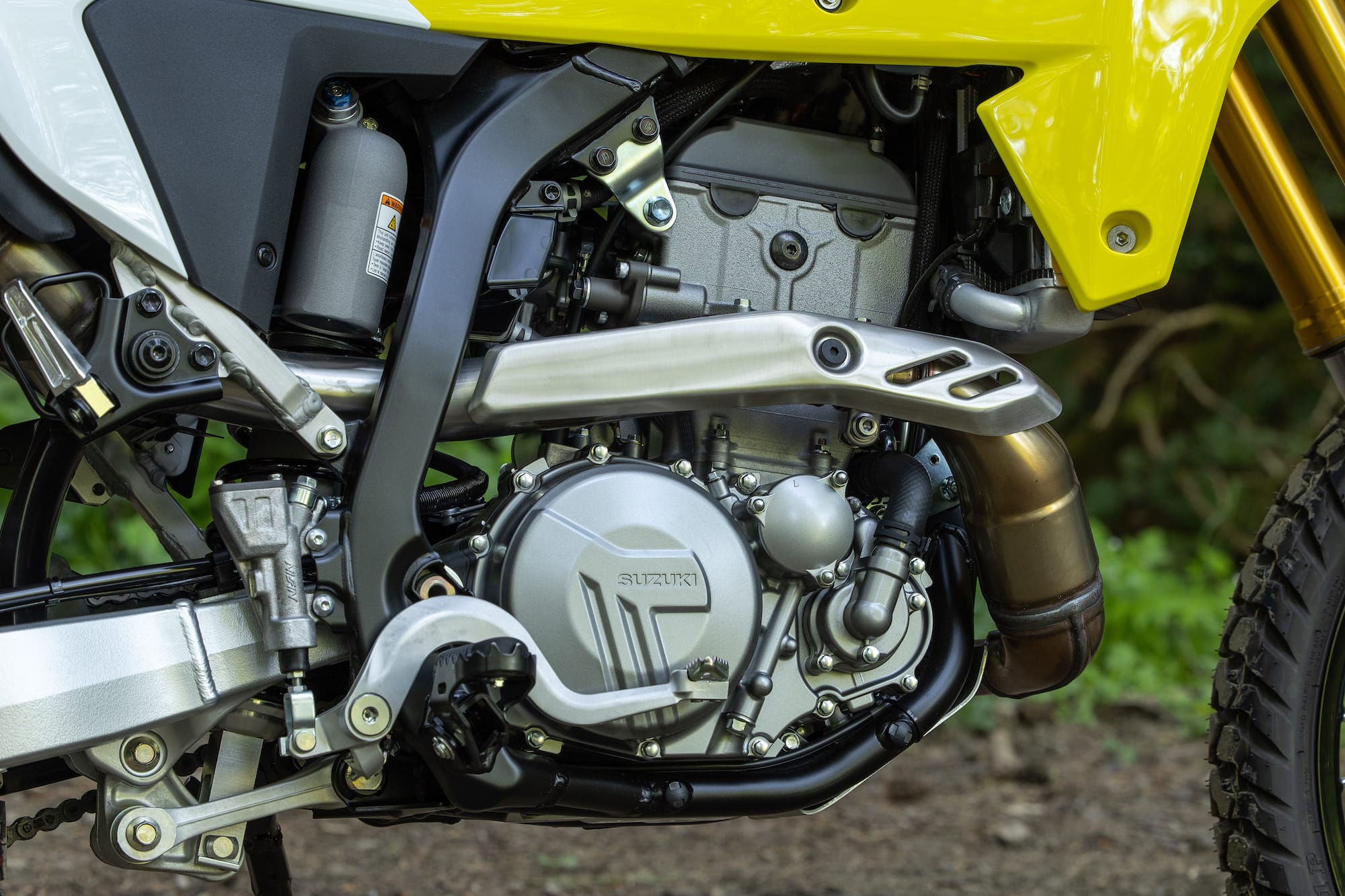
The results of all these changes are a claimed 20% reduction in mechanical loss. The new engine also lost a small amount of peak power (both hp and torque), but gained mid-range performance, while also enjoying a more gradual decline in both once the engine reaches its peak. The DR-Z’s switch to low and mid-range performance coincides with the recent trend of favoring usable power over peak power, which also helps both novice and experienced riders utilize the easier-to-access grunt found lower in the rev range. Given the choice, I’ll trade a few peak ponies and a bit of torque for a fatter mid-range any day of the week.
You may be, as I too was at first, shocked to learn that Suzuki did not add a sixth gear to the new DR-Z’s transmission. Suzuki engineers claimed that retaining five gears allowed the gearbox to remain narrow and did not increase the motorcycle’s curb weight. At a claimed 333 pounds full of fluids, the new DR-Z is already 16 pounds heavier than the old model, so perhaps they have a point. However, wouldn’t the advantage of a sixth gear be worth the additional weight? The Honda CRF450RL and KTM 390 Enduro R both managed to get six-speed transmissions into their gearboxes.
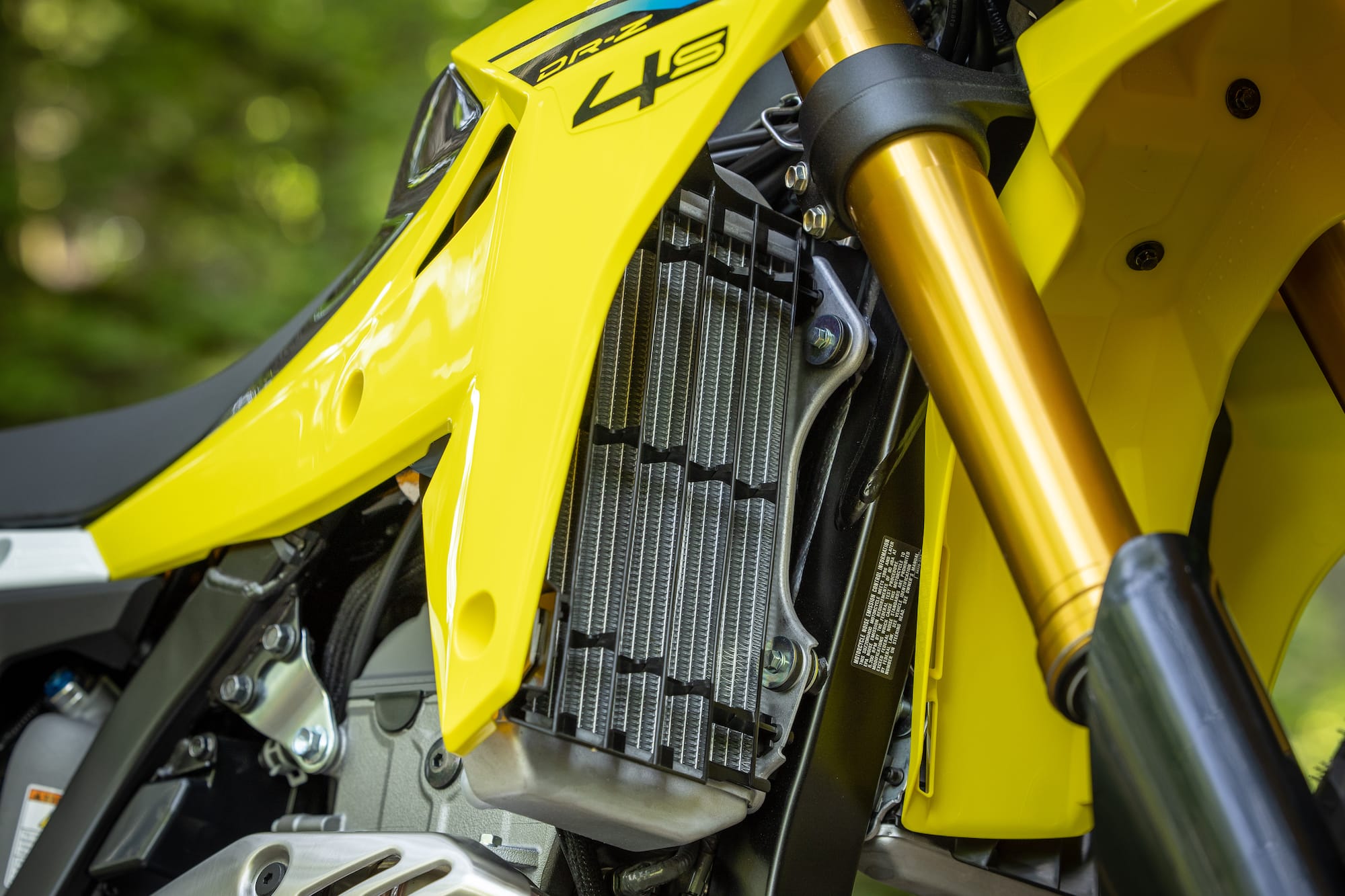
Having said all that, the only time my left foot was searching for the non-existent sixth gear was during higher-speed pavement riding. When I was in the dirt, I never gave it another thought, because five gears were more than enough for the terrain we were riding. Assuming the street-legal aspect of the DR-Z is used solely for getting to and from the dirt, a sixth gear could be superfluous. In a nod to comfort, Suzuki increased the DR-Z’s seat width, reduced the seat height, and increased the footpeg width, all by roughly 0.6 inches. That’s great, but I’d still prefer to spend as little time as possible riding paved roads; it’s just not what the DR-Z4S was intended for.
Suspension and Styling
For 2025, the DR-Z4S benefits from a significant suspension overhaul. The old-timey conventional fork, complete with gaiters, has been replaced with an inverted KYB unit. It offers adjustable rebound and compression damping, as well as 11 inches of travel. The KYB rear shock delivers 11.6 inches of travel via a new progressive linkage and is adjustable for spring preload, rebound, and (high/low) compression damping.
For my weight and level of aggression, the suspension was nicely sorted from the factory. Working in conjunction with the new semi-double cradle steel frame and the new aluminum swingarm (which claims a 9.3% increase in torsional rigidity), the DR-Z4S's handling was both stable and responsive. By combining the chassis' composure with the bike’s electronics, Suzuki has delivered a well-rounded package.
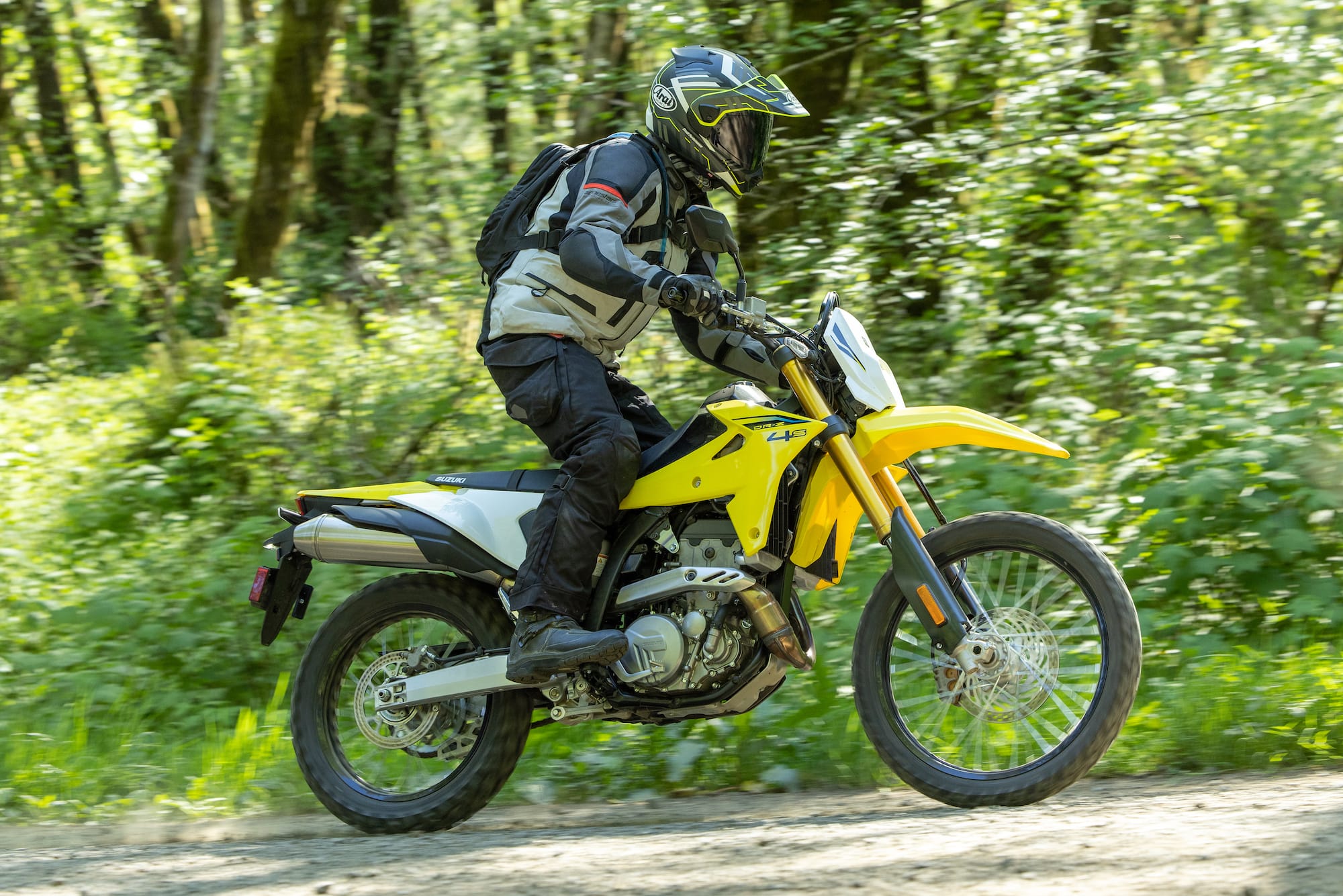
Slowing the new DR-Z was made easier by larger front (increased from 250mm to 270mm) and rear (increased from 220mm to 240mm) discs. The rear braking system also features a master cylinder with an integrated fluid reservoir. The front brake feedback at the lever was pretty good and easy to modulate. I already mentioned that ABS can be turned off at either the rear wheel or both wheels, but unlike the TC or ride modes, you have to be stopped to make the change.
Aesthetically, the new DR-Z reflects a motorcycle designed in this decade, rather than the previous millennium. Suzuki has minimized the gaps in the bodywork and modernized the graphics on the two available color schemes: Champion Yellow No. 2/Solid Special White No. 2, and Solid Iron Gray. Considering the age of its predecessor, it’s not difficult to make significant improvements. However, even without using the previous DR-Z as a benchmark, Suzuki brought to market a dual-purpose motorcycle that checks (almost) all the boxes.
Technical Specs
+valid electronics package (especially G mode), an engine with more mid-range, great suspension package
-no sixth gear, stock handguards would be nice, needs more off-road-worthy tires
Distributor: Suzuki Motor USA
MSRP: $8,999
Engine: 4-stroke, liquid-cooled, single-cylinder, DOHC
Displacement: 398cc
Power: 38hp @8,000rpm; 27.3lb-ft @6,500rpm
Transmission: 5-speed, constant mesh, chain final drive
Rake/Trail: 27.5°/4.3in
Weight (wet): 333lbs (claimed)
Seat Height: 36.2in
Fuel Capacity: 2.3gal
Fuel Consumption: 80mpg (approx.)
Fuel Grade: regular
Color: Champion Yellow No. 2/Solid Special White No. 2, Solid Iron Gray
